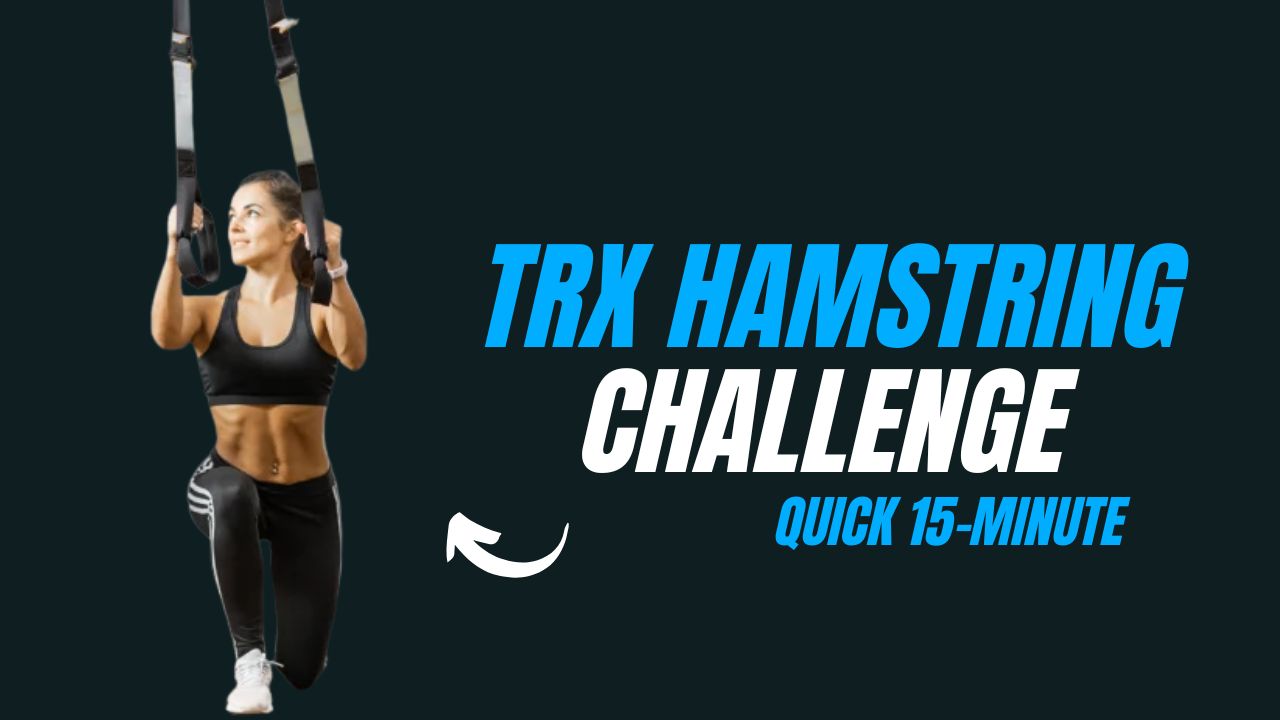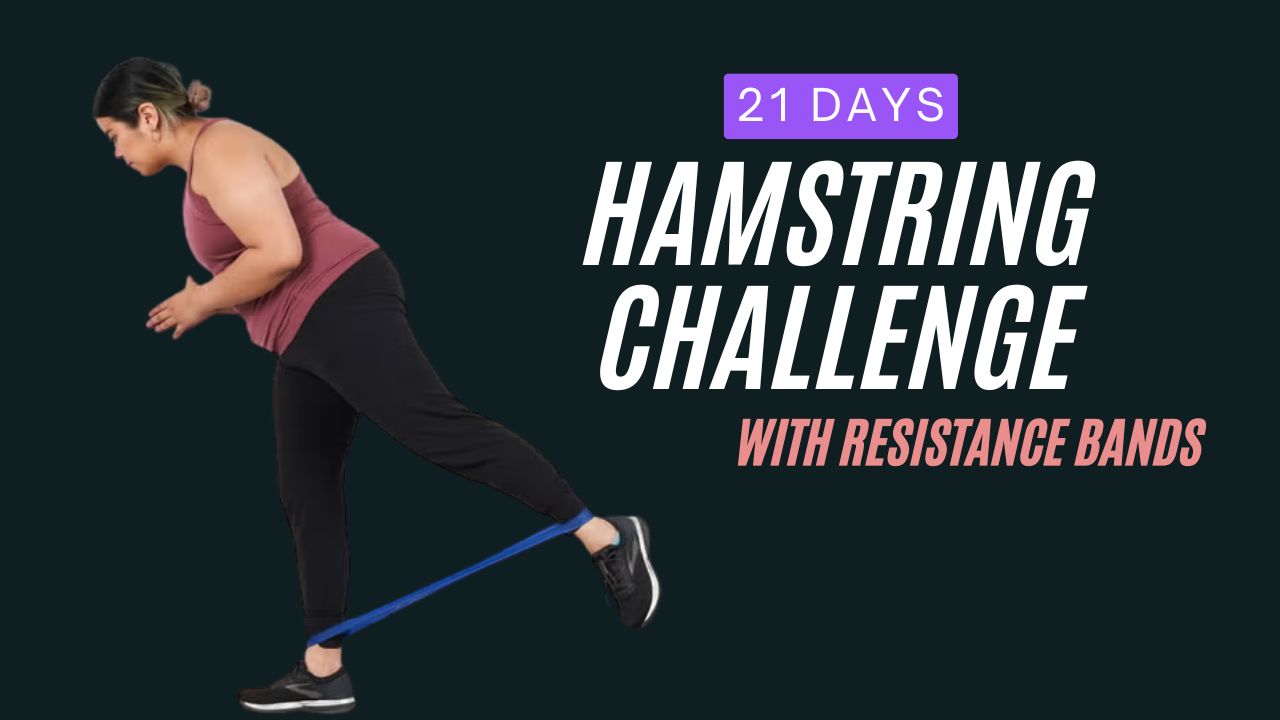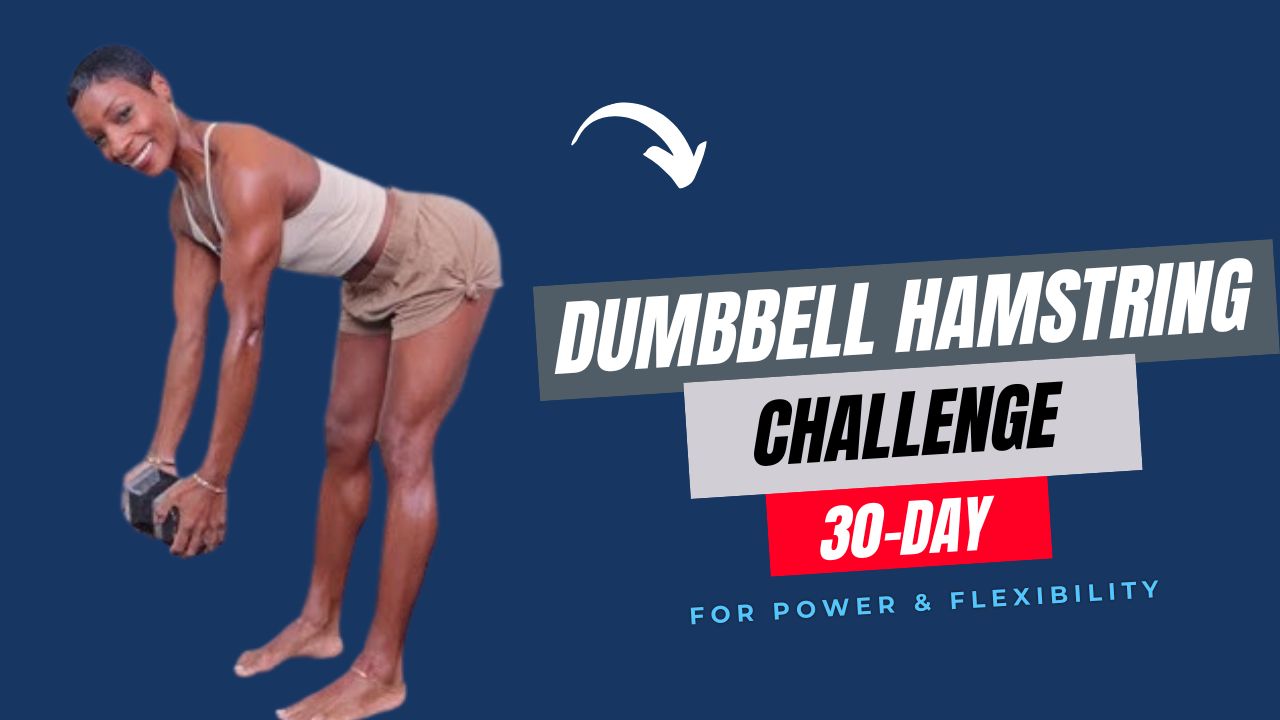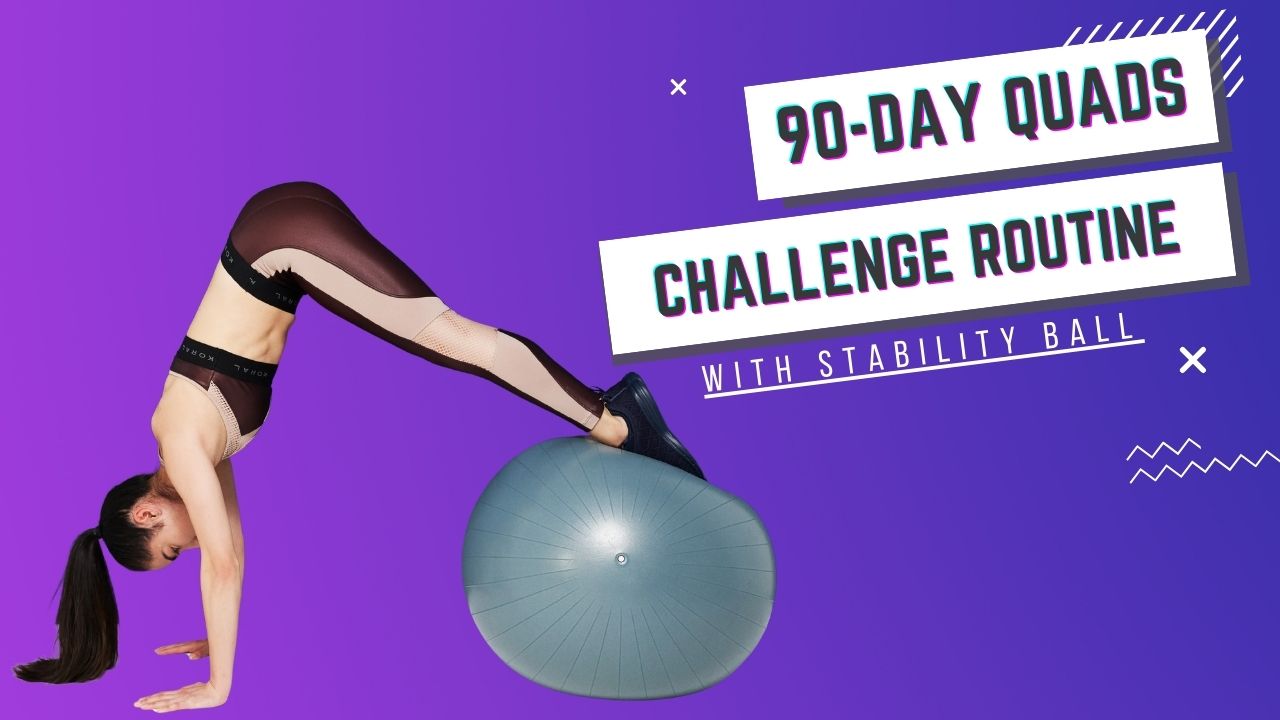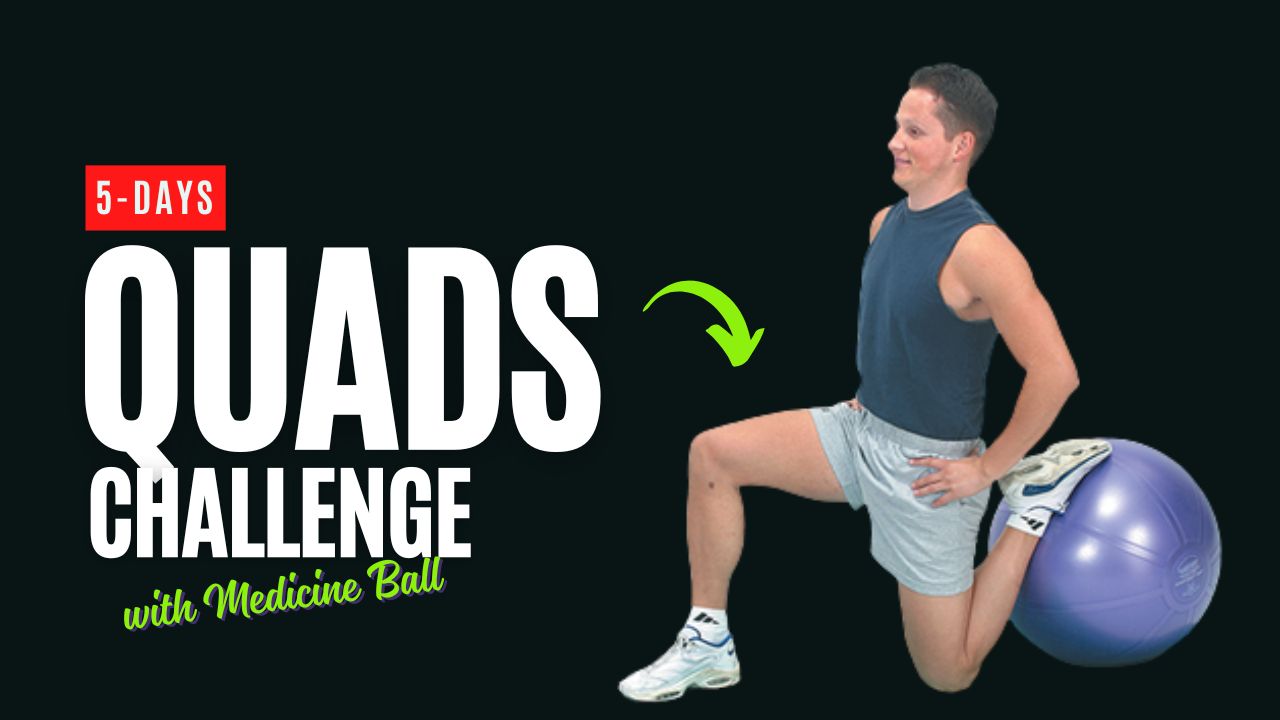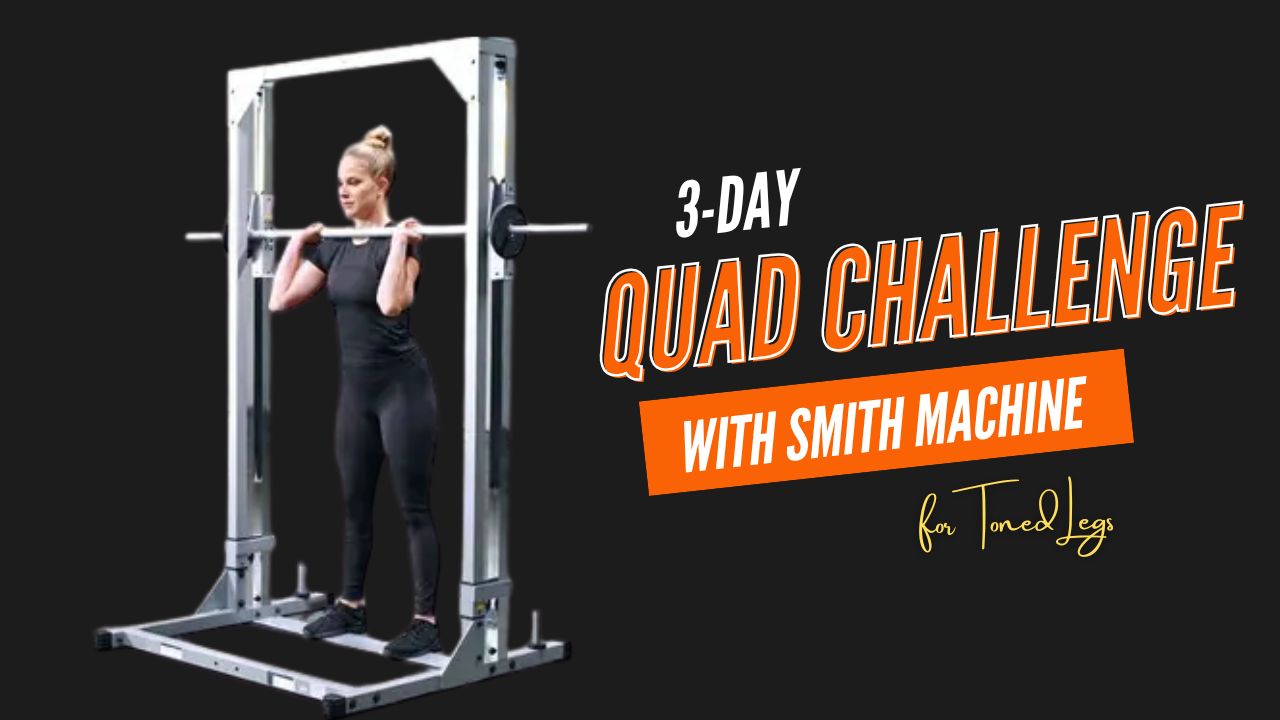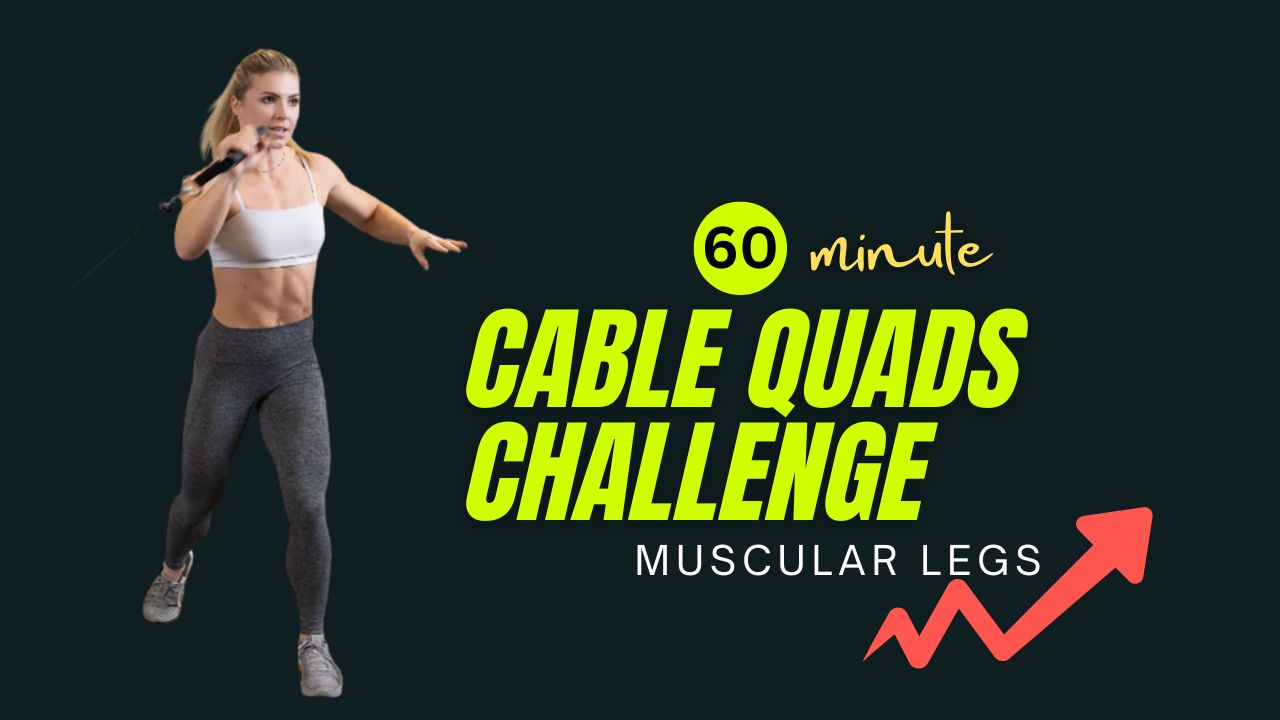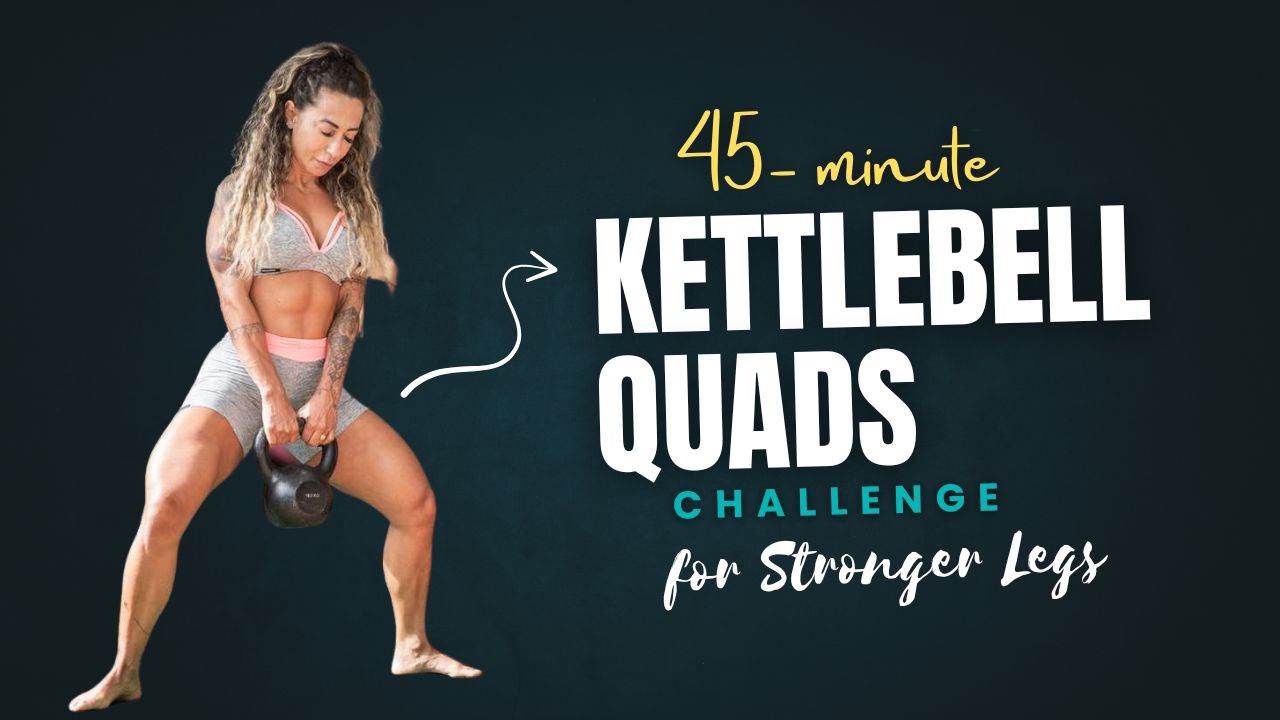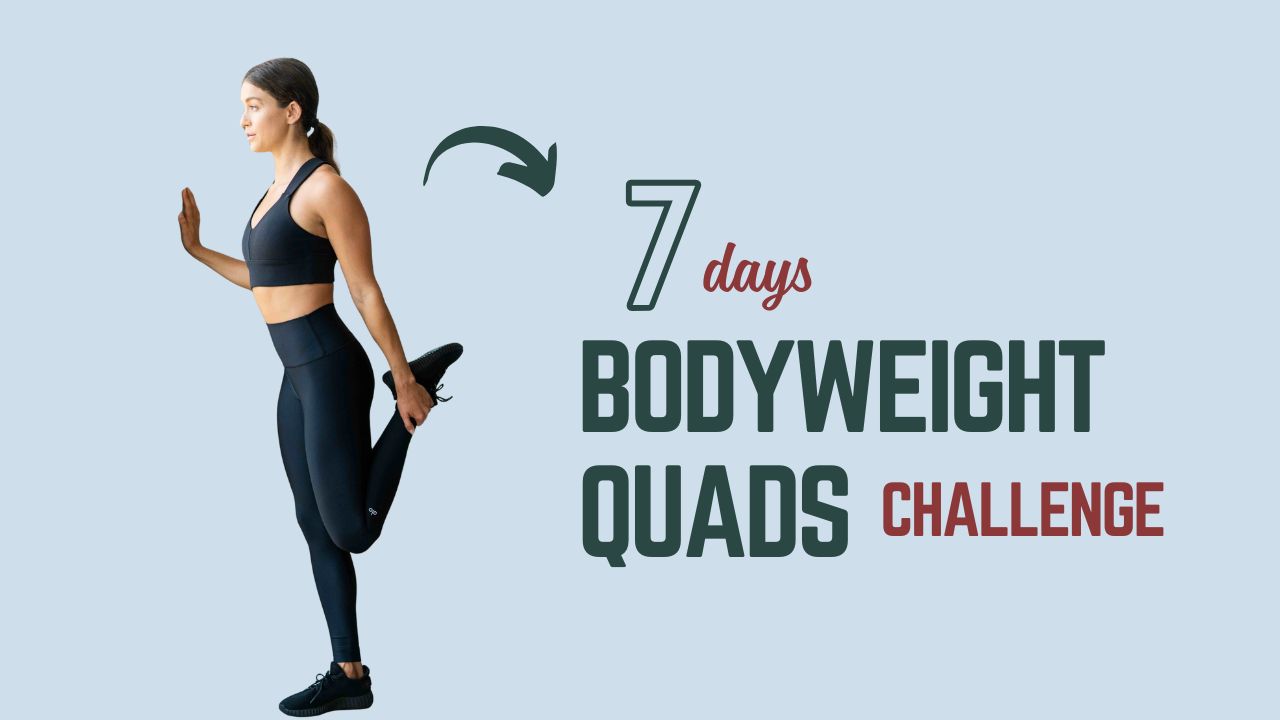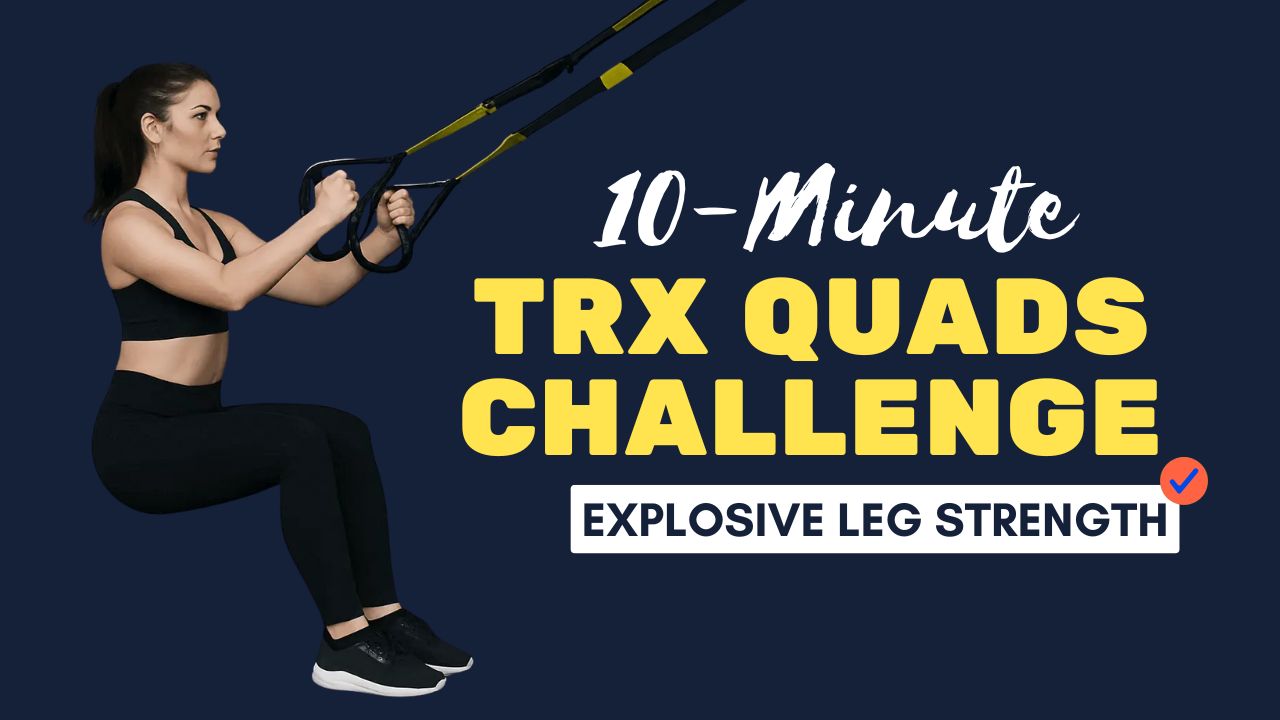Do you know that your quadriceps (the large muscles on the front of your thighs) are responsible for almost every athletic movement—running, jumping, squatting, and even walking upstairs?
Many people focus heavily on abs or arms, overlooking the true powerhouse of the lower body: the quads. Without strong quads, you’ll struggle with balance, explosive power, and injury prevention.
Here’s the interesting part—traditional quad workouts often rely on weights and machines, but you can achieve lean, sculpted thighs using nothing more than a stability ball.
This underrated piece of equipment challenges your balance, forces your quads to engage deeper, and activates stabilizer muscles you might otherwise miss.
In this 90-Day Quad Challenge with a Stability Ball, we’ll guide you through science-backed exercises, step-by-step instructions, and a structured routine designed to help you build lean muscle, strength, and definition in your quads—all from home.
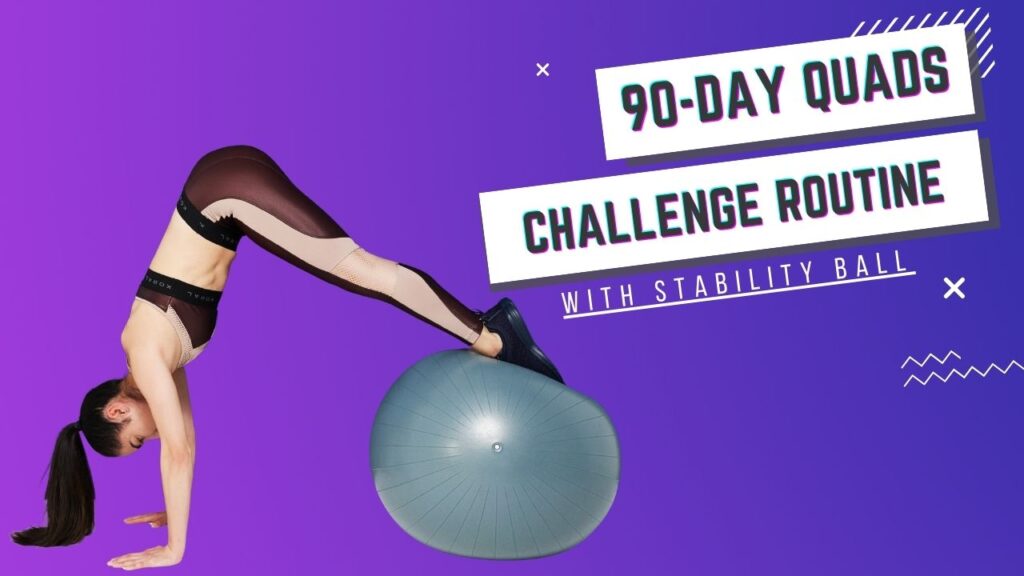
Table of Contents
Why Stability Ball for Quads?
A stability ball isn’t just for core workouts or yoga—it can completely transform your leg training. By adding an element of instability, it forces your muscles to work harder to control the movement. This creates:
- Increased muscle activation in your quads.
- Improved balance and coordination for daily movement.
- Joint-friendly resistance, reducing stress on knees and hips.
- Greater range of motion, helping you train deeper and smarter.
Myth Buster: Many believe stability balls are only good for beginners. In reality, elite athletes use them for functional strength, rehab, and explosive conditioning.
What Can Happen After 30 Days of the Quad Challenge
| Physical Changes | Performance Improvements | Other Benefits |
|---|---|---|
| Noticeable increase in quad muscle tone and definition | Improved balance and stability during daily activities | Boosted confidence in movement and exercise routines |
| Stronger and more resilient knee joints | Enhanced endurance for squats, stairs, and lunges | Better posture due to engaged core and leg muscles |
| Reduction in lower-body fatigue | Increased ability to perform single-leg exercises | Greater motivation to continue fitness journey |
| Slight increase in overall lower-body strength | Improved coordination and control on unstable surfaces | Better awareness of form and muscle engagement |
| Enhanced muscle activation in stabilizer muscles | Increased range of motion in hips and knees | Feeling of accomplishment and mental boost |
Do’s and Don’ts for the 90-Day Quad Challenge
| Do’s | Don’ts |
|---|---|
| Focus on proper form for every exercise to prevent injury. | Don’t rush through reps or compromise technique for speed. |
| Warm up before starting your workout to prepare muscles and joints. | Don’t skip warm-ups or cool-downs, as this increases injury risk. |
| Keep your core engaged during all stability ball exercises. | Don’t let your lower back sag or arch excessively. |
| Progress gradually—start with easier variations before moving to advanced moves. | Don’t attempt advanced exercises if your strength or balance isn’t ready. |
| Take rest days to allow your quads to recover and grow. | Don’t train the same muscle group every day without rest. |
| Use a stability ball of the correct size for your height to ensure proper alignment. | Don’t use a ball that is too small or too large, which can compromise stability. |
| Breathe steadily and avoid holding your breath during movements. | Don’t hold your breath, as this can increase blood pressure and reduce performance. |
| Track your progress weekly to stay motivated and adjust intensity. | Don’t ignore pain signals—stop immediately if you feel sharp pain. |
The Quad-Focused Exercises with Stability Ball
Below are the key exercises included in the challenge. Each comes with a brief description, followed by a step-by-step how-to so you can perform them safely and effectively.
1. Stability Ball Wall Squat
Description: A foundational move that isolates the quads while protecting the lower back. By rolling the ball against the wall, you create controlled resistance.
How to:
- Place the stability ball against a wall and position it in the curve of your lower back.
- Stand with feet shoulder-width apart, slightly forward.
- Slowly squat down until thighs are parallel to the ground, keeping knees aligned over ankles.
- Press through your heels to return to standing.
- Perform 12–15 reps.
Tip: Hold the squat at the bottom for 3 seconds to increase quad burn.
2. Stability Ball Bulgarian Split Squat
Description: This single-leg exercise builds strength, balance, and coordination while heavily targeting the front quad.
How to:
- Stand a few feet in front of the ball.
- Place your right foot back on the ball, shoelaces facing down.
- Bend the front knee and lower your hips into a split squat.
- Push through the front heel to return to standing.
- Repeat 10–12 reps per leg.
Do you know? Research shows that single-leg training activates stabilizer muscles up to 30% more than bilateral squats.
3. Stability Ball Leg Press (Bridge Variation)
Description: A no-machine alternative to leg presses. Your quads and glutes fire together while stabilizing your core.
How to:
- Lie on your back with feet on top of the stability ball, knees bent.
- Press into the ball, lifting your hips into a bridge.
- Slowly straighten legs, rolling the ball forward.
- Bend knees again to return.
- Perform 12–15 reps.
4. Stability Ball Step-Up with Knee Drive
Description: A dynamic movement that strengthens quads and enhances athletic performance.
How to:
- Place the stability ball against a wall for support.
- Step one foot onto the ball carefully.
- Push through that leg to step up, driving the opposite knee up to hip level.
- Lower with control and repeat.
- Perform 10–12 reps per side.
Fact: Step-up variations mimic real-life movements like climbing stairs, making them one of the most functional quad exercises.
5. Stability Ball Hamstring-to-Quad Rollout
Description: While hamstrings initiate the move, quads stabilize and control, creating balanced lower-body strength.
How to:
- Lie on your back with calves resting on the ball.
- Lift hips into a bridge.
- Roll the ball in toward you, bending knees.
- Slowly push it back out while keeping hips lifted.
- Perform 10–12 reps.
6. Stability Ball Pike Squat
Description: A challenging combo move where core and quads work together. Ideal for advanced progression.
How to:
- Start in a plank with your shins on the ball.
- Engage your core and roll the ball toward your hands, lifting hips into a pike.
- Lower hips back, then bend knees into a squat-like position on the ball.
- Extend back to plank.
- Do 8–10 controlled reps.
7. Stability Ball Side Wall Squat
Description: A unique variation that hits inner and outer quads while improving hip stability.
How to:
- Place the ball between your outer hip and a wall.
- Step feet slightly wider than shoulder-width apart.
- Squat down while pressing your hip into the ball for resistance.
- Push up to return.
- Perform 12 reps per side.
Structuring Your 90-Day Quad Challenge
The key to results is consistency. This program gradually increases intensity over 12 weeks. You’ll train 3–4 days a week, with rest days for recovery.
Weekly Breakdown
- Phase 1 (Weeks 1–4): Focus on form and endurance. Moderate reps, lighter intensity.
- Phase 2 (Weeks 5–8): Add holds, slower tempos, and more volume.
- Phase 3 (Weeks 9–12): Advance to harder variations, higher reps, and combination moves.
90-Day Quad Challenge Routine
| Week Range | Exercises | Sets & Reps |
|---|---|---|
| Weeks 1–2 | Wall Squat, Bulgarian Split Squat, Leg Press | 2–3 sets, 12–15 reps |
| Weeks 3–4 | Wall Squat, Bulgarian Split Squat, Leg Press, Side Wall Squat | 3 sets, 12 reps |
| Weeks 5–6 | Wall Squat, Bulgarian Split Squat, Leg Press, Step-Up | 3–4 sets, 12–15 reps |
| Weeks 7–8 | Wall Squat, Split Squat, Leg Press, Step-Up, Hamstring-to-Quad Rollout | 3–4 sets, 10–12 reps |
| Weeks 9–10 | Wall Squat, Split Squat, Leg Press, Step-Up, Rollout, Pike Squat | 4 sets, 8–12 reps |
| Weeks 11–12 | Full Circuit of All Exercises | 4 rounds, 8–12 reps |
Conclusion: The End Is Just the Beginning
Completing the 90-Day Quad Challenge with a Stability Ball is no small achievement. Over these three months, you’ve not only built stronger, leaner quads but also improved your balance, coordination, and lower-body endurance. Your stability ball is no longer just a piece of equipment—it’s a proven tool that has reshaped your strength and confidence.
But here’s the key: true fitness isn’t about finishing a program—it’s about sustaining progress. Think of this challenge as a foundation phase. Your quads are stronger, more resilient, and ready for bigger challenges ahead.
Challenge Continuation Idea
Once you complete the 90 days, you can take your progress further by:
- Progressing to weighted variations: Add dumbbells or resistance bands to squats and step-ups for added strength.
- Building a hybrid program: Pair stability ball quad work with hamstring, glute, and calf routines to sculpt the entire lower body.
- Switching to performance goals: Use your quad strength to train for a 5K, improve vertical jumps, or enhance cycling stamina.
- Starting a new cycle: Repeat the 90-day challenge but increase intensity—longer holds, more reps, or shorter rest periods.
Remember, muscle growth and endurance thrive on consistent adaptation. By continuing beyond the 90 days, you’ll not only maintain your gains but also elevate your fitness to the next level.
Frequently Asked Questions (FAQs)
Do I need a gym to complete this challenge?
No. This program is designed to be completed at home using only a stability ball. You can also add dumbbells or resistance bands for progression if desired.
How often should I perform the exercises?
The routine is structured for 3–4 days per week. Rest days are crucial for muscle recovery and growth.
Can beginners do this challenge?
Absolutely. Beginners should focus on form first, use lower sets/reps, and progress gradually over the weeks.
How long does each workout take?
Most sessions take 30–45 minutes, depending on the number of exercises and rest periods.
Do I need to follow a special diet?
While the challenge focuses on exercise, a balanced diet rich in protein, complex carbs, and healthy fats will help maximize lean muscle gains.
Can I combine this with cardio or other workouts?
Yes. Light cardio or flexibility sessions on non-leg days can complement your quad challenge without interfering with recovery.
How will I know if my quads are improving?
Signs of progress include increased strength, better balance, visible muscle definition, and improved endurance in daily activities or other workouts.
What if I miss a day?
Don’t worry—just continue with the next scheduled workout. Consistency over time matters more than perfection.
Can this program help with knee pain?
Stability ball exercises can strengthen the quads without putting excessive strain on the knees, which may help prevent injury. However, consult a doctor if you have pre-existing knee conditions.
What’s next after completing the 90-day challenge?
You can continue with a progression plan—adding weights, combining full lower-body workouts, or repeating the program with increased intensity to keep building strength and definition.
